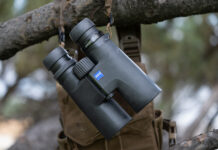Swarovski ATX85 and Kowa 884 Spotting Scopes
By: Matt Cashell
Any serious western hunter knows the value of a high performance spotting scope. No other item can save you more hiking than a spotting scope that lets you know exactly what you are looking at. Two new spotting scope/eyepiece systems have recently entered the market promising new levels of performance.
Kowa optics don’t get as much press as the prominent European brands in hunting circles, but the birding community has been chirping the praises of Kowa’s spotting scopes for years. Kowa isn’t new to the business and has been turning out quality spotters for decades. Kowa assigns the name “Prominar” to their very best products made with the best materials and with the highest performance. Kowa has several Prominar spotters boasting the latest technology including flourite/glass and pure fluorite crystal objectives.
However, even among the Prominar models, one stands above the rest: the Prominar 88mm spotting scope. The 883 model is the angled version while the 884 is the straight viewing model. Kowa offers a wide variety of eyepieces including fixed power, zoom, wide angle and long-eye relief. The Prominar 88 uses an objective lens element made of pure Flourite Crystal rather than flourite-containing glass. The result is dispersion at absolute minimal levels. The 884 has spent several years on the market, typically paired with the TE-10Z zoom eyepiece which provides a 20-60 magnification range. This combination has been widely reported as the finest spotting scope on the planet, providing excellent resolution and aberration control. Now in 2013, Kowa released a new wide angle zoom eyepiece, with a magnification range from 25x to 60x. Impressive, but the real story is INSIDE the eyepiece. Kowa incorporated two ED lens elements in the eyepiece design to further correct aberrations. The resulting eyepiece, called the TE-11WZ, is the first Kowa eyepiece to carry their Prominar status itself.
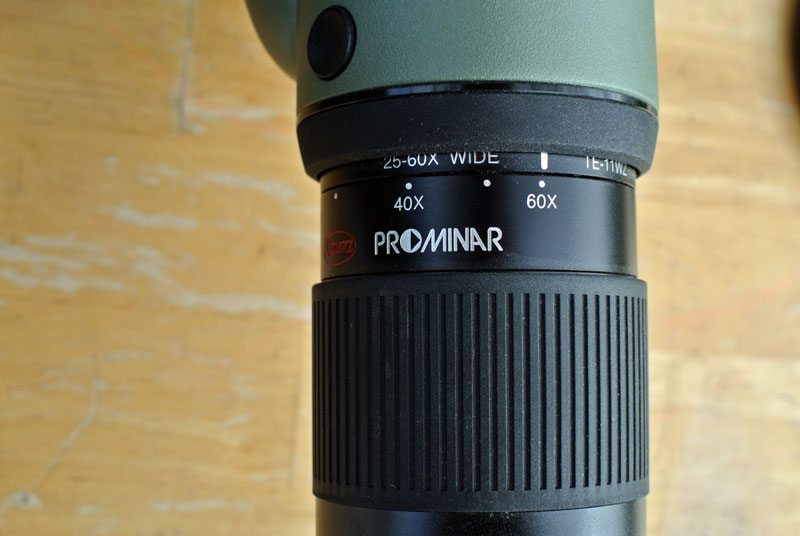
Swarovski is a worldwide leader in hunting optics, and spared no expense in designing their most recent spotter, the STX/ATX. Their previous line of STS/ATS(M) spotters garnered universal praise from hunters and birders alike, particularly because it combined light weight with remarkable optical performance. Still, Swarovski didn’t rest on their laurels and introduced a completely new type of spotting scope system: The STX/ATX. These spotters combined the eyepiece and prism assembly, moving the magnification ring down towards the helical focus wheel. Instead of changing eyepieces like traditional spotting scopes, the user switches objective “modules” for their need. Modules are available in 65mm, 85mm, and a HUGE 95mm version. Magnification is determined by the module with the 65mm and 85mm modules providing 25x-60x and the 95mm module providing 30x-70x. The views wide angled similar to Kowa’s TE-11WZ.
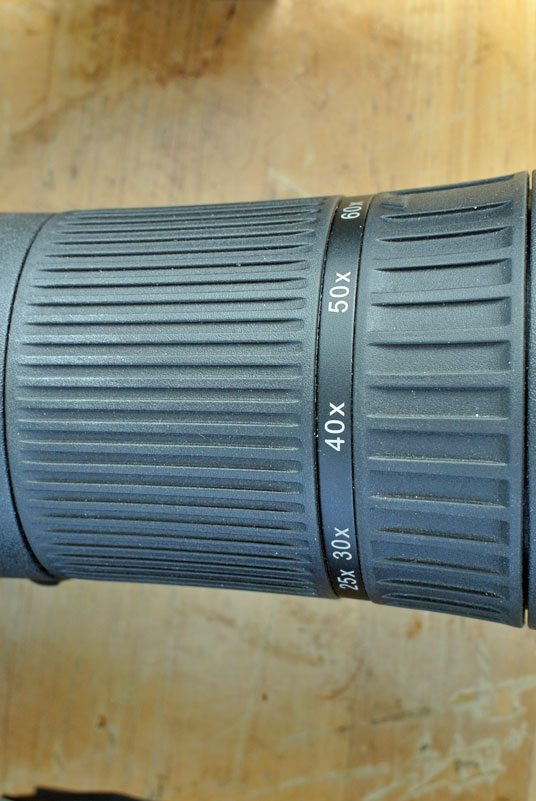
I aquired a Swarovski ATX with the 85mm objective and Kowa was kind enough to send me one of the very few TE-11WZ eyepieces available. A shootout commenced.
Kowa 884 w/ TE-11WZ eyepiece:
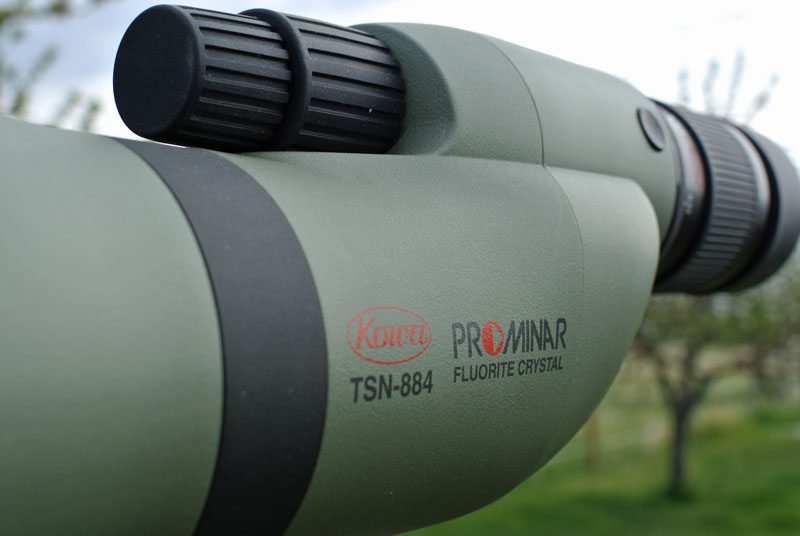
The Kowa is a striking spotter with its huge objective hanging out front. It is a traditional metal body spotter with a top-mounted dual focus (coarse/fine) knob. The eyepieces are attached via locking bayonet. The TE-IIWZ is similar in size and appearance to the previous Kowa zoom, and snaps firmly into place. Everything works as it should, and fit and finish are worthy of the premium pricing. The dual focus knobs have an excellent grip and rotate smoothly. Like many dual-focus models, I tend to use the fine focus 90% of the time. There is no rubber armoring on the body. The eyepiece of the scope has ample eye relief with the specs listing a constant 20mm. The foot requires an adapter plate to fit in a tripod head. The dual focus knobs were well-damped and smooth with the slow and fast ratios just right for the system.
Swarovski ATX 85:
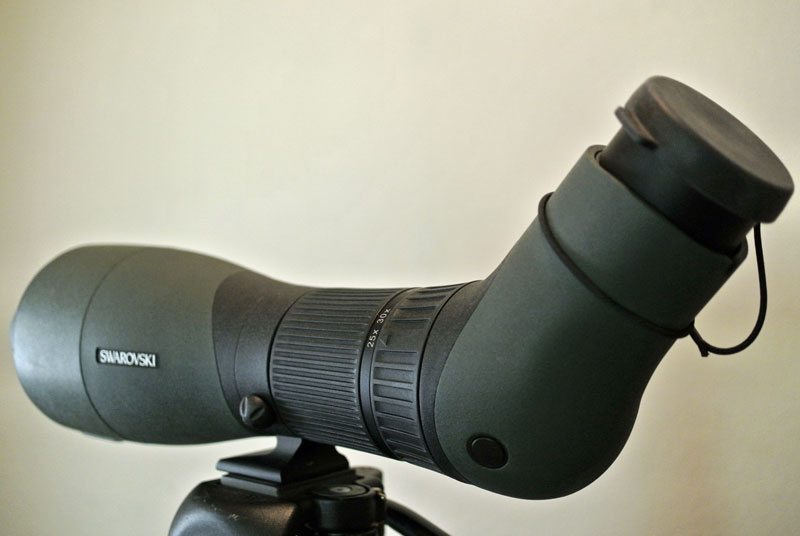
The design of this spotter is quite unique. As I mentioned earlier, the eyepiece and prism are integrated while the objectives are interchangeable. Moving the power ring to the middle of the scope seemed gimmicky to me at first, but I realized it has several advantages. With one hand the viewer can change the big helical focus ring and the power ring. The focus is light and smooth while the zooming ring is stiffer, and has bigger deeper ribs, allowing for the viewer to tell the rings apart by feel alone. Additionally, when digiscoping with common adapters, you can zoom magnifications easily, and see where the setting is, while all the while leaving your camera attached. The tripod foot is shaped so that a quick release plate is not needed for mounting the spotter in standard Manfrotto (or Swarovski) tripods.
The ATX is covered in that familiar green rubber armor with pleasant texturing and impeccable finish. The eyepiece is quite wide, and feature a soft textured rubber twist out eyecup. The helical focus is buttery smooth and light. The modular design of the ATX also made me realize the utility of having multiple objectives. The hunter could use a large objective like the 85 or 95mm versions from the truck for an antelope hunt or horseback elk hunt, but switch over to the lightweight and compact 65 for backpack hunts.
Weight:
These are both big spotters. Actual weights with eyepieces were 4 lbs. 2.7 oz. for the Prominar 88 and 4 lbs. 5 oz. for the ATX. Compare this to the relatively svelte 3 pounds 11.1 oz. for the Swarovski ATS80HD, with the 20-60 zoom.
Digiscoping:
The Kowa has one of the most extensive lines of digiscoping accessories available with a myriad of dedicated digiscoping adapters, over-the-eyepiece designs, and iphone adapters.
The Swarovski ATX was designed with digiscoping in mind and is available with several adapters and even a lens for DSLR and mirrorless cameras (The TLS APO accessory) that attaches directly to the eyepiece, providing an integrated telephoto solution.
I experimented with both scopes and found that both offered superb wide angle views, flat fields, and vibrant colors that produced great photos.
Performance:
As soon as I had both spotters next to each other, I went straight to the low light test. Across the Bitterroot Valley from my home is a hill where the local high school’s most recent graduating class constructs their class year (now “13“) in white painted rocks. I set the spotters up side by side on tripods and watched as the light faded. As the evening approached twilight one thing became obvious: This would be a real slugfest. With the calm evening air, apparent resolution was remarkable. I could see individual painted rocks in the numbers. Spectacular. I continued to watch while my timer went off in 5 minute intervals. There was a lot of back and forth, but even as darkness fully engulfed the hill, there was no clear winner, which said a lot for the light transmission capbilities of the Swarovski as it had a 3mm objective size handicap.
Field of view specs for both scopes were incredibly wide. Both scopes gave the impression of looking out the living room picture window rather than down a tube. Both scopes were easy to get behind with ample eye relief. Aberration control was very good, with star testing showing very little spherical aberration. Chromatic aberration was invisible in the center 50% of the FOV with the ATX, while it became noticeable but very mild towards the edge. The Prominar made good use of its low dispersion technology. It took quite some looking to get it to show ANY fringing, even near the very edge. When I was able to see it, it was razor thin. Even though both scopes had incredibly wide fields of view, both images were sharp even to the extreme edge, which meant all of that extremely wide field was useable. Distortion was again remarkably low. Both scopes showed very very light pincushion distortion, with the Swaro showing a touch more than the Kowa. The optical performance of these two scopes is at the very top of the industry.
Contrast and color were very similar between scopes. Both were absolutely brilliantly saturated without a discernable color bias between them. The “wow” factor was fully in effect.
I figured a more objective test of resolution was needed to differentiate these instruments. I ordered an Edmund Optics Resolution Chart, and placed it 50 yards away.

I had several scopes on hand to evaluate alongside these big scopes. This included a Nikon ED50 w/ 13-40 eyepiece, a Vortex Razor HD65, and a Swarovski ATS80HD w/ 20-60 eyepiece. I figured this would give some context to how the big scopes compared against smaller objective scopes.

I performed the testing under fairly stable morning air. The advantage of the super scopes was evident, but unfortunately I couldn’t discern a clear resolution “winner.” Both scopes were able to resolve the same element on the chart, although it seemed I could resolve the element with the Kowa a touch more cleanly, probably due to its slightly better CA control. I was also impressed by the ATS80HD, which resolved only one element larger than the ATX and Kowa. Similarly, at a lower maximum magnification, The Razor 65HD still performed at a very high level. While the ED50 is a top 50mm spotter, it showed the lower resolution potential of a 50mm objective.
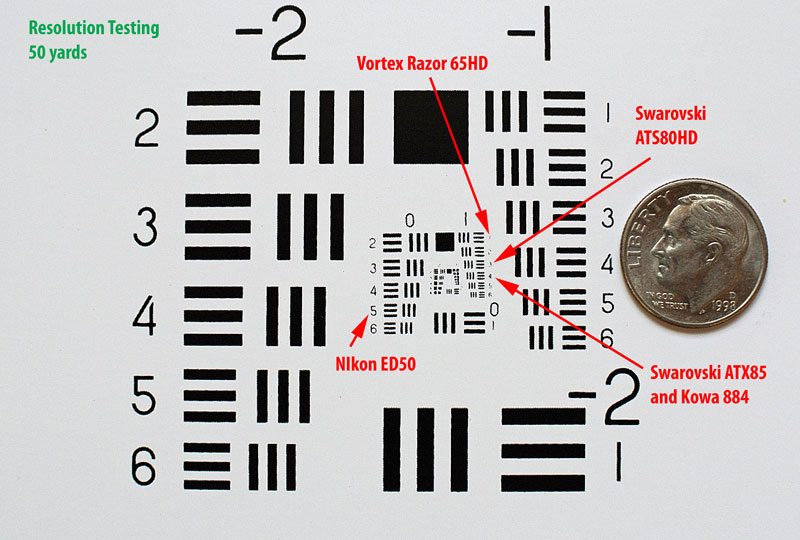
Conclusions:
These are the big dogs of the big spotters. While the Zeiss 85tFL was the best hunting spotter I had seen before this review (and remains an excellent spotter with fantastic brightness), these scopes easily outpaced the Zeiss, offering extremely wide, high-magnifiation views, better aberration control, and much lower levels of distortion.
Between the two, the Kowa gets the very slight edge on optical performance, with its astounding chromatic aberration control. However, the Swarovski is right behind the Kowa, with equal levels of resolution, and a comfortable viewing experience.
The optical differences were slight, but the other features of the ATX separated itself from the Kowa as a hunting spotter. The durable rubber armored design is ready for hardcore field use. The modular design gives it unmatched flexibility, and allows for the scope to be essentially broken in half for easy storage in a backpack. These features combined with the incredible optical performance, make the ATX the best hunting spotting scope currently available.
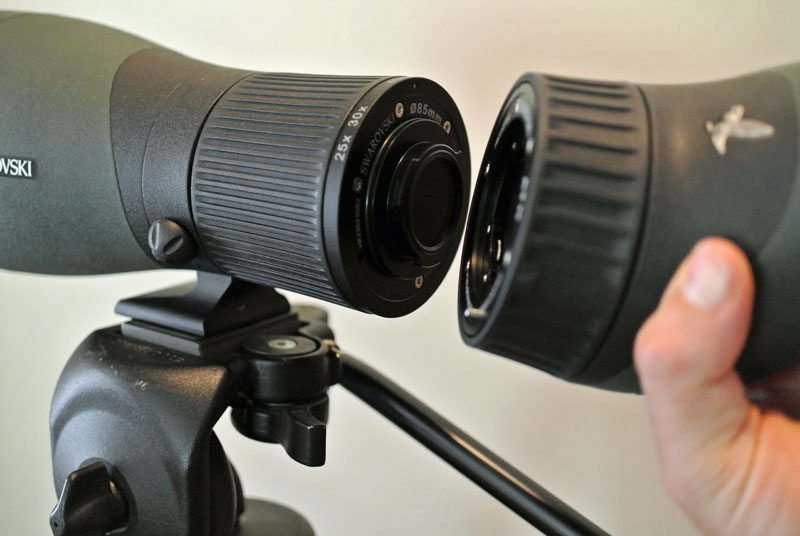
These two scopes require substantial investments. The Prominar 88 with the new Prominar WA eyepiece will set the hunter back around $3000. The ATX with 85mm objective will cost him a whopping $3800. The hunter can add the 65mm objective module for another $850, and have an extremely versatile system covering a wide variety of hunting situations. The costs are high, but hunters looking for the very best should look at the Swarovski ATX/STX and Kowa Prominar 88 scopes first.















